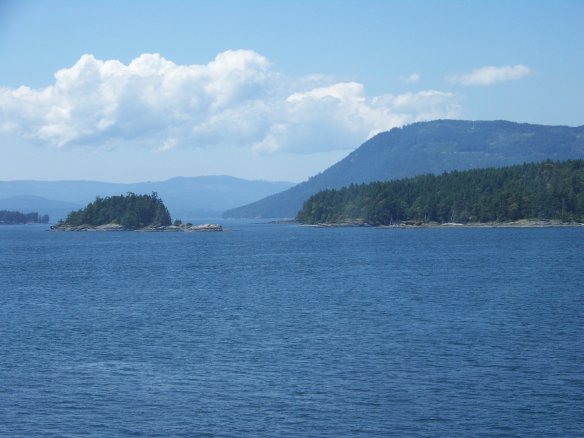 The Ocean is really one big mass of salt water that surrounds the continents. However, the ocean has been divided up into four regions—although there is no real separation. Canada is surrounded by three of these oceans.
The Ocean is really one big mass of salt water that surrounds the continents. However, the ocean has been divided up into four regions—although there is no real separation. Canada is surrounded by three of these oceans.
The Pacific Ocean is the water on the west side of Canada. It is the biggest and deepest of all the oceans. You could fit all the land area of the world into this ocean. It’s name means “mild” because it was thought to not be as stormy as the other oceans.
Did you know that on average ocean water is 3.5% salt by weight? All the rivers that pour into the sea, carry minerals in them including a little bit of salt. When the sun warms up the ocean water and evaporates it up into clouds, the salt is left behind. This is how the oceans recycle our rain water. The rain that falls on the land eventually runs back in the rivers to the ocean, where the warmth of the sun turns some of it back into water vapour or clouds and then the clouds move over the land and rain again.
Ocean water is always moving. The wind pushes it along creating surface currents and waves, the rotation of the earth deflects the currents either clockwise in the northern hemisphere or counterclockwise in the southern hemisphere, cold water sinks and warm water rises creating deep-water currents, and twice a day the pull of the sun and moon makes the ocean surface rise and fall creating tides. During a new moon and full moon, the low tides are lower and the high tides are higher. These are called “spring” tides. The tide is greater on continental shelves and in bays. The Bay of Fundy, between Nova Scotia and New Brunswick, has the lowest tides in the world. The difference can be as much 15 metres.
The outgoing tide can uncover pools on rocky shores where ocean life such as seastars, sea urchins, and sculpins are trapped until the tide comes back in and covers them up.
Unfortunately, the oceans can get sick because of things we do. Wherever you live in Canada, the water that is in the little stream down the road, or the lake nearby, or the ditch in front of your house, even the water you wash with, all ends up sooner or later in the ocean. So, no matter where you live, what you put down your drains, or on the lawn or in the trash can have an effect on the health of the oceans.
BOOKS: Water Dance by Thomas Locker, Houghton Mifflin Harcourt, 2002.
The saltiness of ocean water varies depending on where you are. Take 500 mL of tap water and add 5 ml salt, stir it around and then taste it. That’s sort of what the ocean tastes like.



 With the apple blossoms, summer has unofficially begun…
With the apple blossoms, summer has unofficially begun…